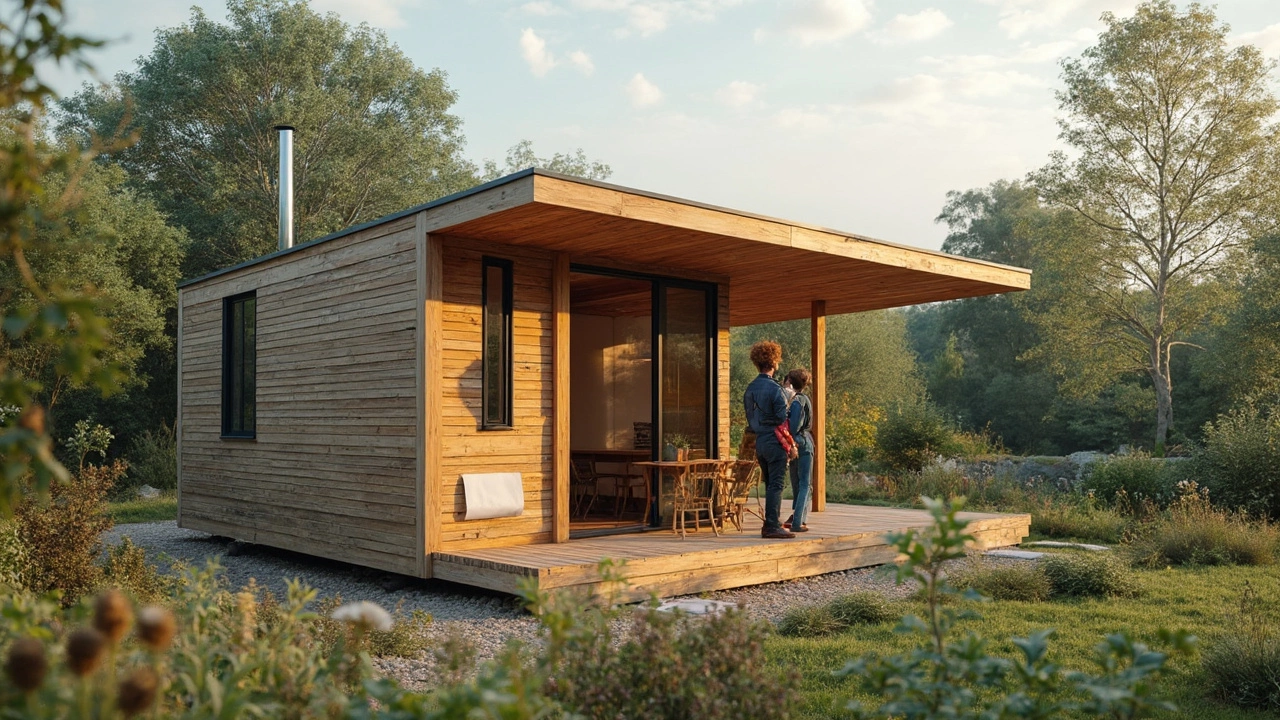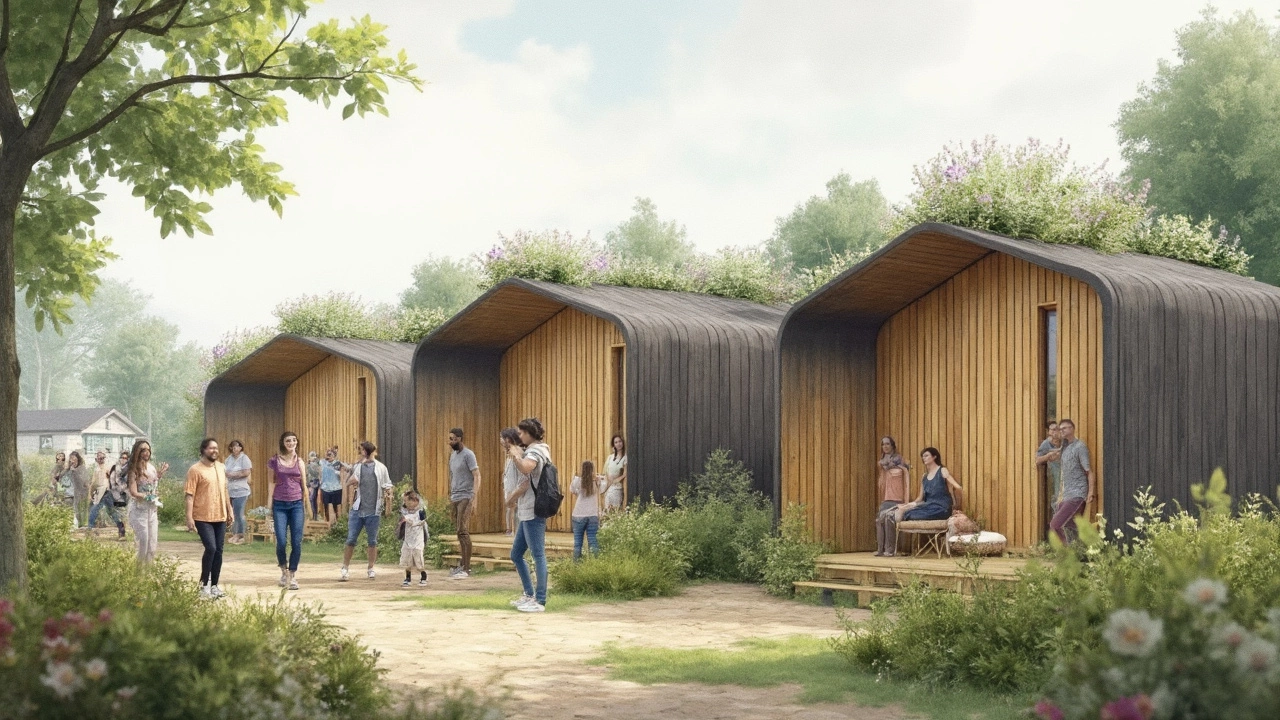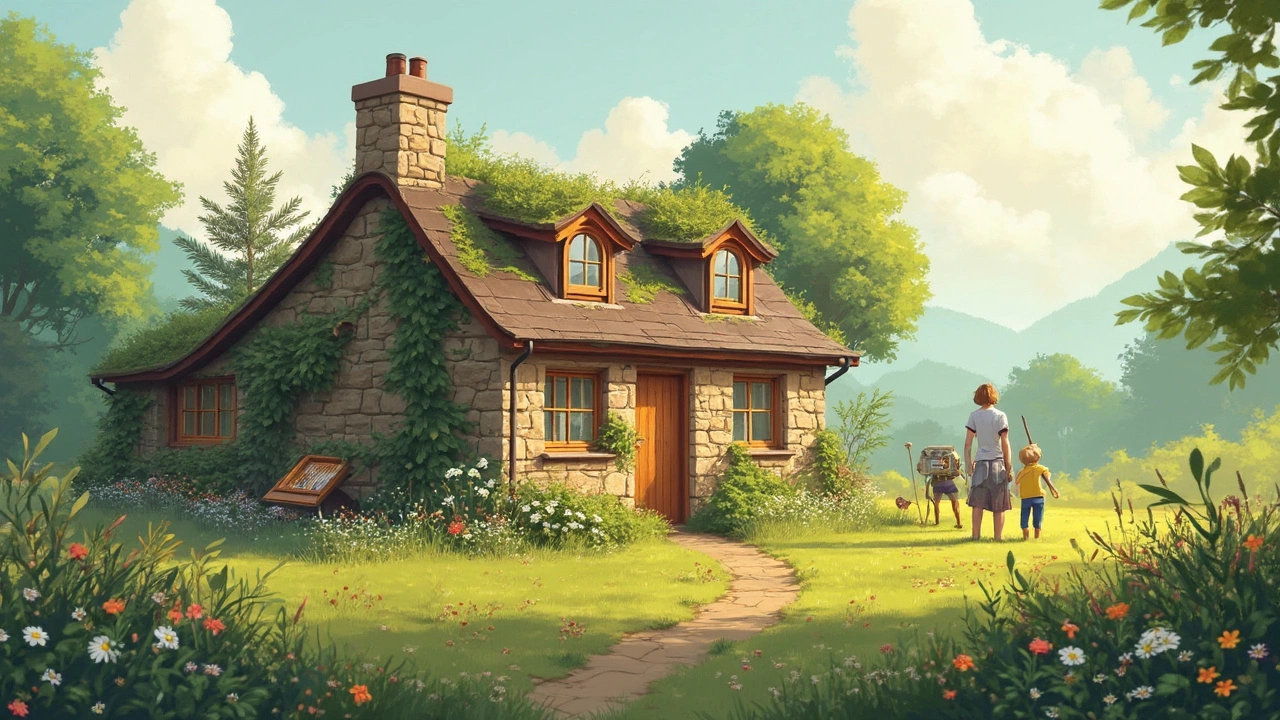Ever wonder why so many people talk about cottage-style houses when it comes to building on a budget? These homes aren’t just charming—they actually keep things simple in a way that lowers your costs from the start. The smaller size doesn’t just mean less square footage; it means less foundation, fewer materials, and a roof that won’t give your wallet a headache.
If you’re dreaming of an eco-friendly home that doesn’t eat up your savings, cottages usually come out on top for bang-for-buck. Think smaller footprints, open living spaces, and just the essentials—no fancy towers or pricey architectural tricks. Even those sweet front porches are usually just a simple slab or deck, not some elaborate add-on. Keeping it straightforward is what lets you actually finish the build without blowing your budget.
It all comes down to a smart design that skips the extras. The fewer angles, the less money you spend. Pretty wild, isn’t it, that skipping a bump-out or bay window could put hundreds (sometimes thousands) back in your pocket? That’s the secret sauce for folks choosing to build a cottage instead of anything bigger or more complicated.
- Why Cottage Style Beats Other Designs
- Simplest Floor Plans Equal Lower Costs
- Which Materials Keep Budgets in Check
- Eco-Friendly Features That Save Money
- Smart Tips from Real-Life Builds
Why Cottage Style Beats Other Designs
Cottage homes win when it comes to keeping costs low for a few pretty clear reasons. First, their simple shapes—usually just a box or rectangle—mean there’s less complexity in the design and less for builders to mess up, which translates to fewer hours and lower labor charges. There’s no fancy roofline, no huge entryway, and not a lot of weird corners eating up materials. This isn’t just cheaper at first—maintenance stays easy and affordable too.
If you look at construction stats, cottage-style houses cost up to 25% less per square foot compared to custom modern homes or big two-story places. That’s mostly because of the stuff you don’t need: no massive foundation, less expensive siding, and smaller roofs. A 2024 building survey found that average cottage construction runs about $155 per square foot, while more complicated homes can push $200 and up.
Size matters here, too. The average eco-friendly cottage clocks in at well under 1,000 square feet. Big homes (2,000+ sq ft) need more of everything—wood, insulation, plumbing, roofing. All those basics get pricey in a hurry. Cottages keep it small and simple by design, which means a better shot at building it with cash, not endless loans.
- Simple, rectangular or square floor plans cost less to frame and roof.
- Less surface area for siding and insulation means real savings.
- Fewer interiors walls and tight layouts cut down on wiring and plumbing costs.
Want some numbers to compare? Here’s a quick table:
| House Style | Avg. Cost Per Sq Ft | Avg. Sq Ft | Typical Total Cost |
|---|---|---|---|
| Eco-friendly cottage | $155 | 900 | $139,500 |
| Modern home | $200 | 1,800 | $360,000 |
| Traditional two-story | $190 | 2,200 | $418,000 |
This isn’t just theory—there are whole neighborhoods built on the back of cheap, simple cottages. If you’re looking for the cheapest house styles that stay eco-friendly and cozy, cottage wins out almost every time.
Simplest Floor Plans Equal Lower Costs
Want to know why simple floor plans save you the most money? It’s all about fewer walls, fewer corners, and just enough space for what you need. The more twists and turns in your home’s design, the more you pay your crew—and your materials bill goes up too. Straightforward layouts stretch your budget way further.
The humble rectangle is a classic for a reason. When you stick to a basic shape—like a 24-by-36 or 20-by-30—every piece of lumber, roofing, and flooring fits together with less waste. You’ll avoid the cutting, custom ordering, or complicated angles that drive costs way up in other designs.
Single-story cottages save even more. There’s no need for expensive stairs, fancy entrances, or extra beams for an upper floor. Everything under one roof means you keep things simple and your labor bill stays low. A lot of cheap house styles from the past use this strategy—think about those classic Craftsman bungalows or shotgun cottages that line old neighborhoods.
- Open-plan living spaces use fewer partitions and create flow without extra walls.
- Simple, boxy shapes are fast for builders and cut down on material waste.
- Skip basements and stick to a slab foundation if your climate allows—it’s one of the cheapest options.
One real-world example? In Oregon, a couple built a basic two-bedroom, one-bath cottage footprint (about 800 square feet) and saved almost 20% compared to neighbors with L-shaped or multi-level homes. The key was sticking to a square design, stacking plumbing fixtures close together, and making each space pull double duty where possible.
So if you’re dreaming about eco-friendly cottages, remember that every extra wall or wobble in your plan is adding numbers to your bill. Go for the easiest floor plan you can live with—it's the best way to keep your costs under control.

Which Materials Keep Budgets in Check
If you’re serious about building a cheap house, your choice of materials can make or break your budget. For a cheap house style like a cottage, folks usually stick to local and easy-to-source options, especially if they want to stay eco-friendly. Shipping in fancy wood or trendy imported tiles adds tons to the cost—why bother if solid, low-cost choices are close by?
Let’s break down what people really use when they’re counting every penny:
- Engineered wood or plywood: It’s usually way cheaper than full-on hardwood, but still sturdy enough for floors and walls.
- Basic concrete slab foundation: Keeps things simple and limits labor costs. Crawl spaces can add up fast in price.
- Metal roofs: Metal roofing panels cost less in the long run than shingles since they last longer and are easier to install.
- Fiber cement siding: It's a favorite for eco cottages—low-cost, fire-resistant, and it holds up to bad weather.
- Recycled or reclaimed materials: Snagging doors, windows, or even flooring from salvage yards not only helps the planet but drops your expenses big time.
- Insulation made from cellulose or recycled denim: This not only cuts heating and cooling bills, but often qualifies for rebates.
Check this out—the table shows what you can expect cost-wise for some of these top picks (per square foot, U.S. averages for 2025):
| Material | Approximate Cost/Sq Ft | Sustainability |
|---|---|---|
| Plywood | $1.50 - $3.00 | Good if locally sourced |
| Fiber Cement Siding | $5.00 - $10.00 | Excellent |
| Metal Roofing | $3.50 - $6.50 | Great (especially recycled) |
| Recycled Insulation | $1.00 - $2.00 | Excellent |
| Reclaimed Doors/Windows | $50-$250 each | Excellent |
Don’t sleep on local discounts. Sometimes small-town hardware stores have leftover batches of tile or paint on clearance—way cheaper than anything you’ll find online or at the chain stores. Skip the fancy finishes, and focus on stuff that lasts, works, and looks good enough.
One last thing: some cities and states even offer rebates or tax breaks for using recycled building materials or energy-efficient windows. So, before you buy, check for local incentives. Saving money isn’t just about what you buy—it’s also about where, and sometimes, when!
Eco-Friendly Features That Save Money
Building an eco-friendly cottage doesn’t just help the planet—it keeps your wallet happier too. Some features cost a bit upfront, but the savings start stacking right away on your monthly bills.
For starters, sealing your cottage really well makes a big difference. Airtight homes don't let warm or cool air slip out, which cuts heating and cooling costs. Swapping regular insulation for spray foam, dense-packed cellulose, or rockwool gives you more bang for your buck than basic fiberglass. There’s even a tax credit in the U.S. right now that covers up to 30% of insulation costs, which helps a lot if you’re on a tight budget.
The roof matters too. Opting for a metal roof made with recycled materials doesn’t just look good—it lasts decades and reflects sunlight, so your place stays cooler and you use less air conditioning. If you add solar panels, you can cover most or all of your energy needs. In 2024, the average small cottage with panels saw power bills shrink by at least 70%.
- Install low-flow fixtures: These cut water use by half and often cost the same as regular ones.
- Choose LED lighting: It’s about 90% more efficient than old bulbs and needs swapping far less often.
- Go for tankless water heaters: They only heat water when needed, which shaves down energy bills.
- Reclaimed or recycled materials: Siding, flooring, even doors and windows often cost less than new, and give your home character.
- Smart thermostats: They’re not just trendy—a recent study showed they saved small homes about $180 a year on average.
Take a look at where the savings show up most. Here’s how much some eco-friendly cottages typically save each year on utilities compared to standard builds:
| Feature | Average Annual Savings (USD) |
|---|---|
| Airtight insulation | $500 |
| Solar power (small array) | $800 |
| LED lighting | $120 |
| Smart thermostat | $180 |
| Low-flow fixtures | $90 |
Small choices add up. If you’re building a cottage and want to keep both the planet and your bank balance in mind, these features deliver real results fast.

Smart Tips from Real-Life Builds
If you want the cheapest cottage possible, nothing helps more than learning from folks who’ve done it before. People who’ve built their own eco-friendly cottages keep coming back to a few game-changing tricks you won’t find in old textbooks.
- Build Small and Boxy: The simplest, most affordable cottage on record so far in the U.S. was a 400-square-foot one-bedroom in Oregon, built for under $40,000 (including labor). A simple square or rectangle saves on every part of the build—less material, less waste, fewer headaches.
- Go Modular When You Can: Several builders in Vermont and Maine chose modular prefab cottage kits to save thousands. The kits arrived ready for quick assembly, reducing labor, which can eat up 30-50% of your total cost.
- Salvaged Materials Beat New: Using reclaimed wood, secondhand windows, and repurposed doors keeps the budget happy and adds serious eco-points. A Kentucky couple reported saving close to $8,000 on a 600-square-foot build just by hitting local salvage yards and online marketplaces.
- DIY Where It Counts: Many people tackled small jobs like painting, trim, and even insulation themselves. If you’re handy, you might save 10-20% off your entire budget.
A few real-world numbers can help put it all in perspective. Here’s a look at what owners spent on key features in recent eco-friendly cottages:
| Feature | Average Cost (USD) | Money-Saving Hack |
|---|---|---|
| Insulation (small cottage) | $1,200 | Recycled denim or blown-in cellulose |
| Windows & Doors | $2,000 | Used or surplus buys |
| Heating System | $1,500 | Mini-split or pellet stove |
| Foundation | $5,000 | Concrete piers instead of full slab |
One last tip: Local codes are always a wildcard. Before grabbing a hammer, check your permits, minimum square footage rules, and energy requirements. Skipping this step can turn your affordable dream cottage into an endless money pit. The more time you spend researching local rules—and finding creative ways to fit your build within them—the more you’ll save when it’s time to actually build.
